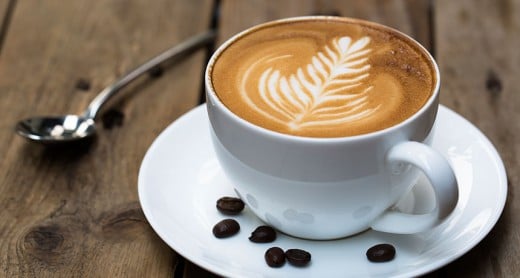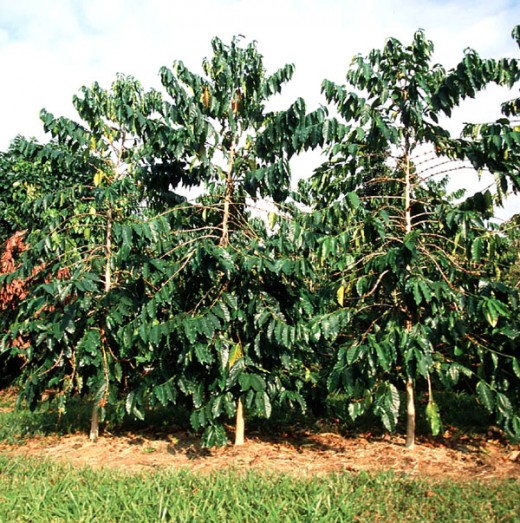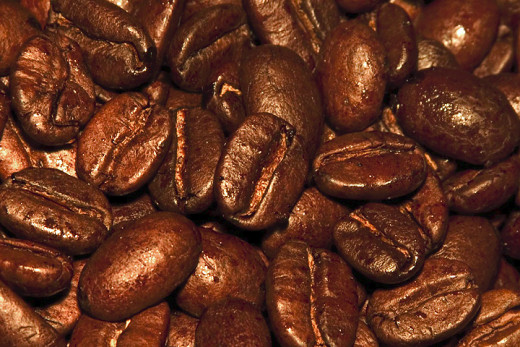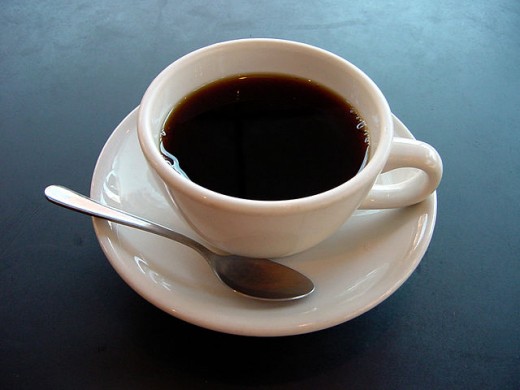Coffee: The Venti-Sized Love in My Cup
A Long Term Love Affair

She is always with me.
I wrap my hands around her and her warmth radiates through my body. When we’re together, I feel alive. My eyes widen, my pulse quickens, and I can look at the rest of my day with hope, optimism, and the possible belief that there is a benevolent God running this universe.
Yes, I love my wife, too.
Those of us who are true caffeine addicts know the true bliss that comes when freshly roasted and ground coffee beans have hot water poured on them and have their product run through a proper filter. It is liquid euphoria when done properly. The taste buds awaken and sing praise to Caffeina, goddess of the hot liquid morning eye openers.
When coffee is old, overcooked, and stale, the sad thing is that we’ll still drink it because the alternative is the equivalent to banging our head against a concrete wall. Oh, we are so used. Bad coffee is like bad sex. Yes, it’s bad, but you’re still getting some.
Our civilization is addicted to coffee.
We will pay ridiculously high prices to get a good cup of coffee in the morning. We need to remember that there probably isn’t anything different about the actual coffee bean that Starbucks uses in their nectar. It is just that they take the time and effort to do the processing right and give the customer the smile and service they deserve. It’s their brand. And we’ll pay the four bucks and change to get a good latte made properly and served to us with a modicum of respect.
We also know that America runs on Duncan. Show me a Duncan Donuts and I’ll show you a place where not only obesity flourishes but a coffee addiction is halted for the moment. Granted, some have really bad coffee. I find, though, that this is the exception that proves the rule. If you’re looking for a decent cup of coffee at a good price, Duncan Donuts will fill the bill.
My point is that we need our cup of Joe. We need that one bit of regularity that comes with our morning and gives our brain that bit of a push to clear the cobwebs that came with our last night’s sleep. We know that with each day we live, we will most likely start the day with a fresh cup of coffee.
It is such a large, subtle part of our lives that very few of us know what and how a good cup is produced.
Let’s take a closer look.
The History of the Bean

People have been drinking coffee for at least 800 years. We like it.
Aside from the concept of a zero, it’s another thing we thank some of the Middle East for. Coffee has had its origins in Ethiopia, Egypt and Yemen and later on to the rest of the Middle East and Africa.
According to one account, the disciple of Sheik Abou'l Hasan Schadheli, Omar, was once exiled from Mocha to a cave. He had no food and began to look for things to eat. He found a plant that had berries that were too bitter to eat and when he cooked the beans they became hard. When he tried to boil those roasted beans (to soften them), he found the brown liquid gave him energy and he was able to survive for days. Once word reached the city of Mocha again about the wonderful concoction that Omar made, he was invited to come back.

The actual name “coffee” is a Dutch derivative of the Turkish word “kahve” which came from the Arabic word “qahwa” short for “qahhwat al-bun” – “wine of the bean”.
It came to Europe in the late 16th Century, as part of the Italians trading with the Muslim nations that were nearby. Venetian merchants introduced it to the wealthy and after the Catholics decided not to ban it (yes, they almost did), it became more widely accepted.
It came to England through the efforts of the British East India Company and the Dutch East India Company. One of the first places that began serving it was the Queen’s Lane Coffee House in Oxford – which still exists today.
It came to the Americas as seedlings in 1720 and began to flourish in Haiti, as well as the rest of the Carribean, fifty years later. It had also made its way to Brazil in 1727, but was not fully cultivated until 1822 when it spread through Sao Paulo and Rio.
Where do you get your energy boost?
Coffee in the US
Coffee has become a morning staple in the US and an integral part of this country’s work culture. While the siesta is popular in Spain, the “coffee break” is something this country wholeheartedly embraced. Sleep is for other people who want to have less stress and live longer.
That’s not the American way – we live on stress and have it for breakfast.
We need to indulge in our caffeine addiction at all times. If we’re starting work, we need a cup of coffee. If we’re getting together with friends we’ll meet at a Starbucks. If we’re cramming for an exam, we’ll down a dozen cups of coffee to cram that information into our caffeine fueled cerebral cortex. It is the low end of the speed spectrum, I’ll grant you. However, it’s what keeps us going.
It is the filler of B-movie dialogue. It is the way an entire generation of middle class Americans passed the time.
It resurrected the long dormant career of Margaret Hamilton from being a Wicked Witch of the West to the kind Cora the Coffee Lady for Maxwell House. She brought coffee to a new market as a kindly old face that competed with other kindly old women – like Mrs. Olsen for Folgers.
The irony of this is that witches will almost always drink tea over coffee – but what does Madison Avenue know?
Final Words
So much of my life has revolved around this beverage that I knew I had to write about it.
As an undiagnosed ADHD child, I did not have the benefit of Ritalin growing up. What I had was an accident. When I was in seventh grade, I started drinking coffee and found that I was able to keep my attention a little bit better. My mind did not wander as much and, as most kids that have ADHD, I found that I didn’t have the dead areas of my day where I needed to ask the teacher, “What was the middle part again?”
ADHD kids work better when they’re on stimulants.
Later on, back when dinosaurs roamed the Earth, I got a job as a night watchman at the local Nestlé’s plant. You’ll never guess what I drank to keep awake during my 11: PM to 7: AM hours. Not many people know this but coffee beans are green before they are roasted. When they are roasted their smell is not unpleasantly pungent and will not only permeate the factory, but the neighborhood as well. Residents of Freehold, NJ, can tell the difference between a cocoa roasting night and a coffee roasting night – they are two completely different smells.
I once got a bag of freshly roasted coffee while I was working as an assistant traffic clerk at a coffee brokerage house. If you haven’t had freshly roasted coffee yet – roasted within the hour, you haven’t lived.
As a traffic clerk, I learned about how coffee comes into this country from the Ivory Coast and from Sao Paulo. It’s a fascinating business on how a coffee or cocoa shipment is assessed. Coffee beans are roasted at the office and a taster evaluates the quality of the beans through many cups of coffee lined up on a large lazy Susan. The taster will take a sip, swirl it in his mouth, much like a wine taster, assess the quality of the coffee, and spit the mouthful of coffee into a spittoon. Then he’ll move onto the next cup and repeat.

An entire truck sized container can be rejected based on what the assessor says among other factors. Coffee is checked based on a 2% rejection rate. It can be rejected for mold, insect infestation, and a variety of other contaminants. All this is based on samples taken from the container.
As in all things in life, the painful experience of a thing’s reality takes the magic out of what you want it to be. Ideally I wanted coffee to be a mystical concoction that was created upon a treacherous mountain top where only a learned elder would dispense limited amounts of it upon the physical trials of a trained champion. To this day, I have had to expunge the knowledge of coffee and cocoa processing out of my head so that I may truly enjoy it. I need to forget that it’s a commodity that’s traded by ruthless sociopaths upon a stock market floor.
But then again, I’m so addicted to it, you could tell me that it was the byproduct of boiled troll snot and I’d still drink it.
I had tried to give it up entirely and found that the flu-like symptoms that came with the detox process were terrible. The detox of coffee from your system includes headache, sweating, acne, and general aches and pains. People who have given up coffee have done so and have kept off of it rather to have that monkey on their back.
Someday, I’ll try it again. However, now is not the time. I have things to do and a mind to keep clear.
Those of us who are a slave to Joe know that we can’t start the day without one cup. If we don’t have it, we’re generally irritable and may even be capable of a psychotic incident taking out the talking, babbling thing that wants our attention and doesn’t get out of our face.
It is for that select group of people, that I save their lives every day by drinking a cup of hot energetic goodness.
This content is accurate and true to the best of the author’s knowledge and is not meant to substitute for formal and individualized advice from a qualified professional.
© 2013 Christopher Peruzzi








